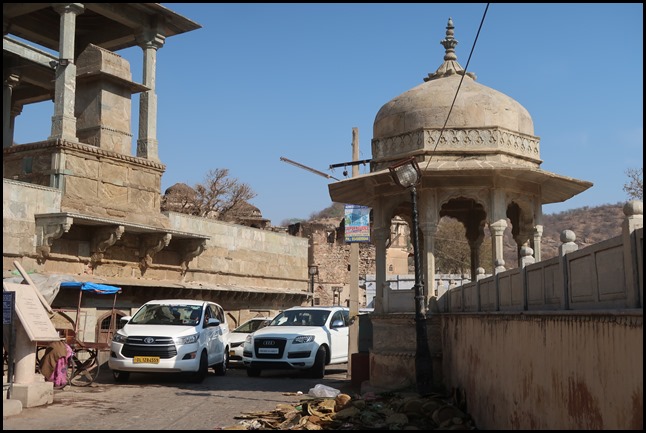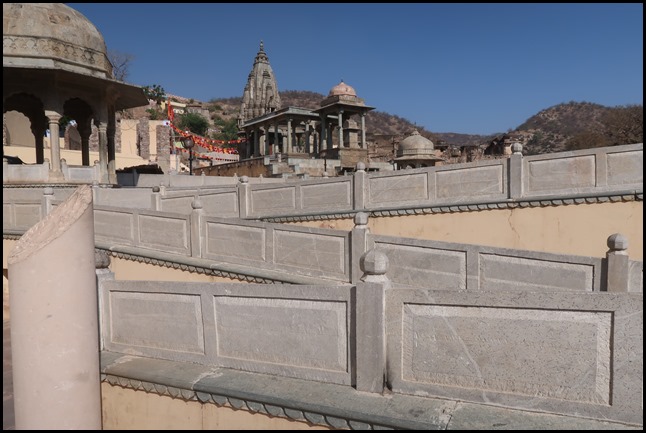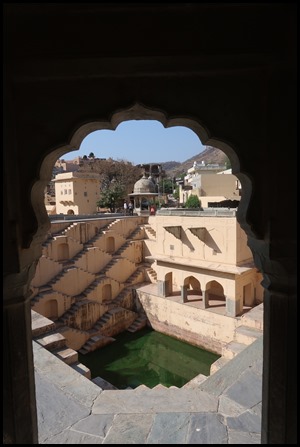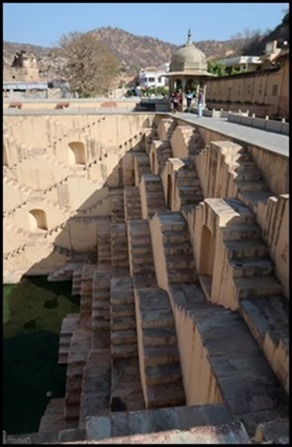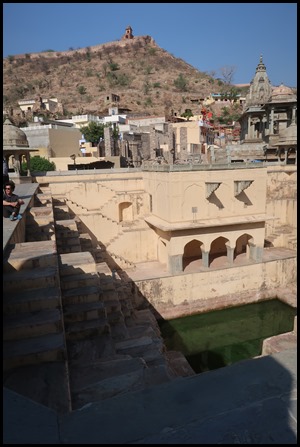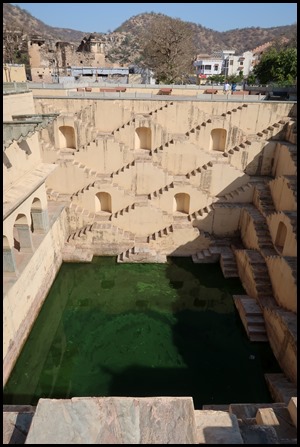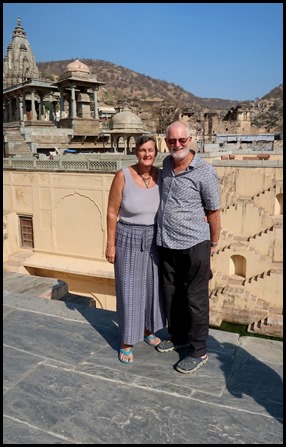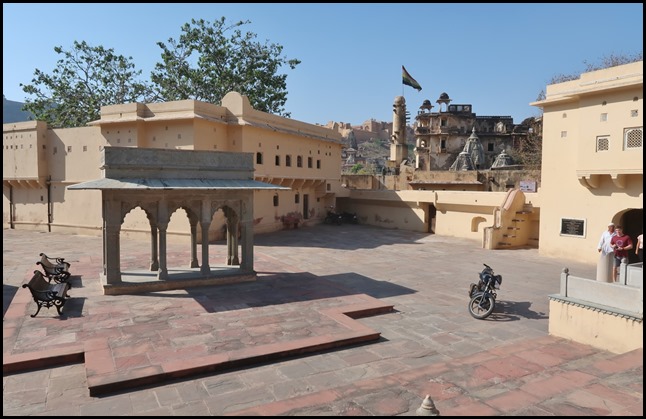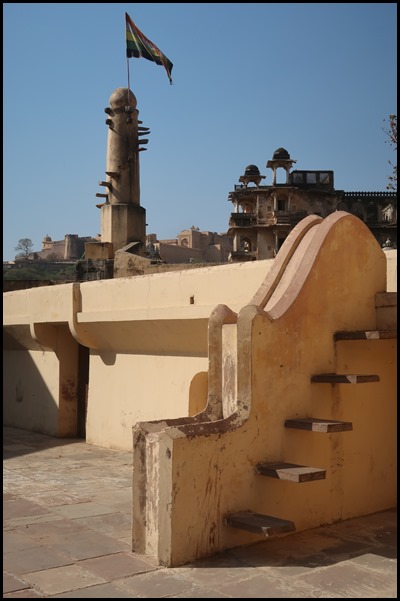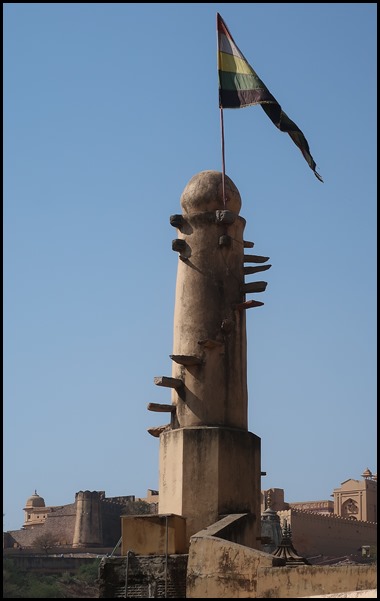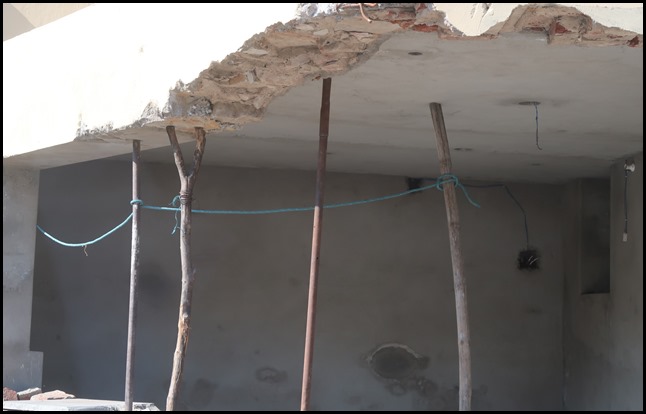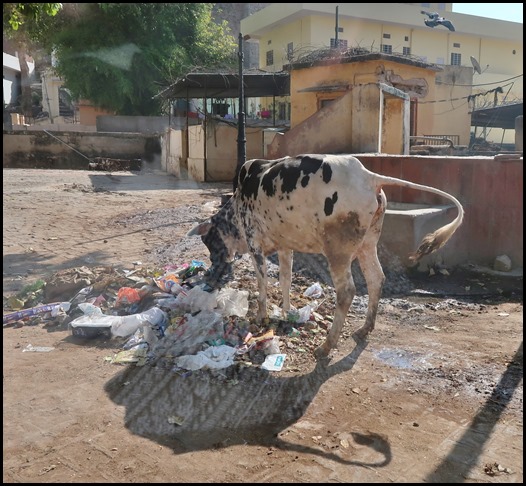Gate, Temple & Stepwell

|
Amer – Kheri Gate, Ambikeshwar Mahadev Temple and the Panna Meena Stepwell
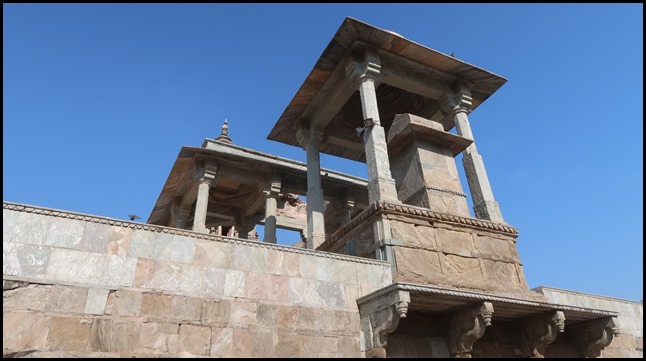 We left our digs at eight for a busy
program. Mob (our driver) stopped in town to pick up a tour guide and we headed
toward the Amber Fort. Because we had no wish to ride an elephant (the usual way
to get up to the fort from the car parks), we wended through skinny streets and
stopped. We had seen Kheri Gate on the last wiggle and I bimbled back to take
some pictures, Bear and our guide waited quietly. Looking up I saw......??? not
sure but it looked impressive.
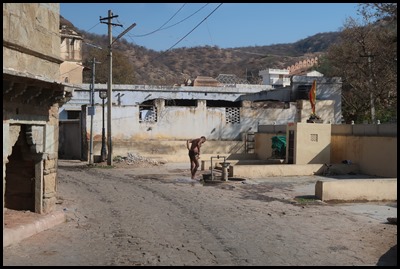  Bimbling on I enjoyed a man at his
ablutions.
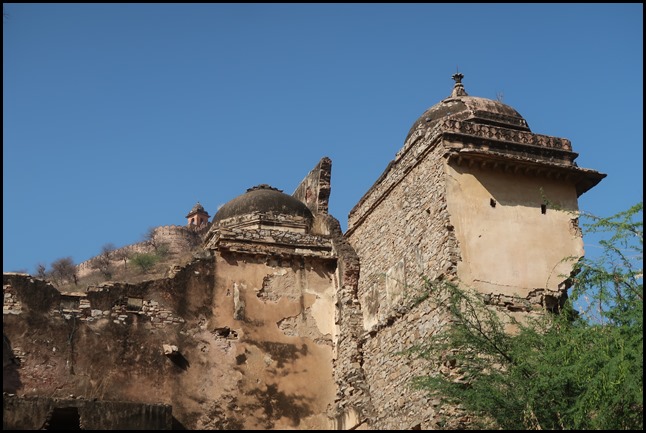 Above me, an impressive
ruin.
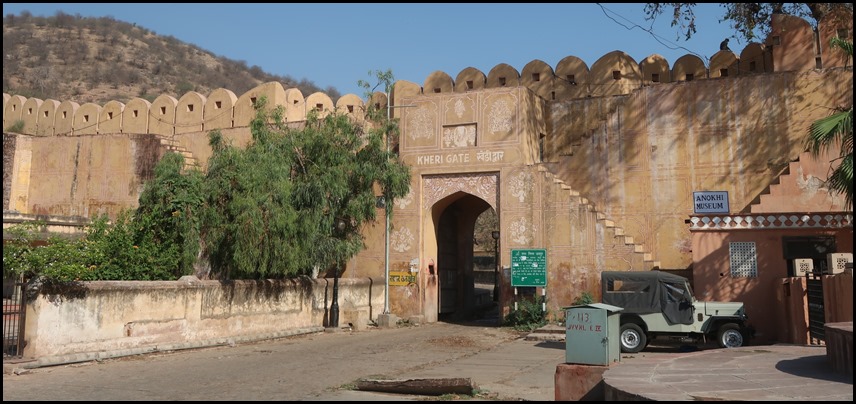 Kheri
Gate.
  Kheri Gate is one of the gateways along the middle protective
city wall. (The outer wall is the third longest wall in the
world)
 On my way back to
Bear the ruin looked even more
impressive.
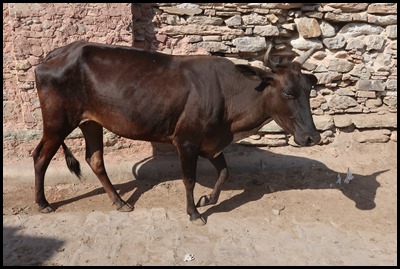 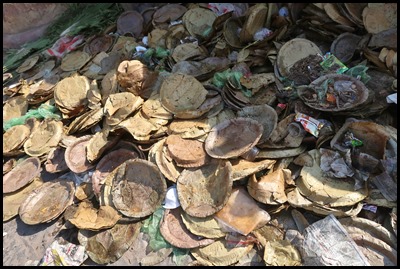 A friendly cow and a pile of rubbish – at least it was
all recyclable plates.
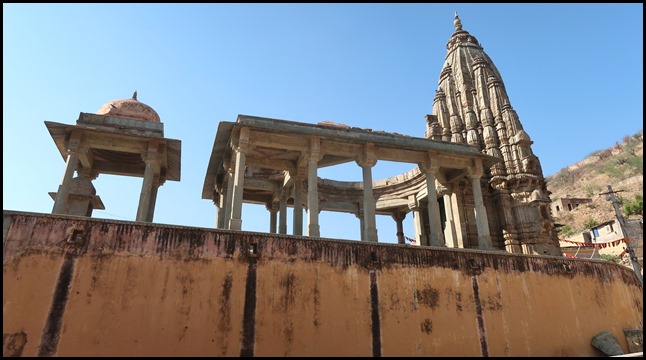 Next,
above me was the temple. I found this description on www.amerjaipur.in and loved it:- Amer
is named after Ambikeshwar Mahadev temple. This
temple is 5000 year old or may be more. This temple was built by Ambika king, he
was the meena king. There is a story about this temple. King had a one cow. Cow
gives milk only at specific place in the forest. King was surprised. Then king
decided to digging that place. He found the shivling (Sculpture of lord shiva).
King decided to built this temple. It was said that. Lord Krishna tonsure
ceremony was held in this place. In this temple there is sheetla mata mandir and
other gods temple. Near
temple there is reservoir (kund) panna meena kund. Whenever the water level
comes high in the kund. The water automatically comes into the temple.
Nobody knows. Where it goes back in the
earth.
 The
temple taken from the stepwell.
The Indian conservation people are more
grounded and realistic:-
The Bihariji Temple was constructed in early 17th century during the reign of Mirza Raja Jai Singh 1 who was renowned for his architectural contributions to the town of Amber. There seem to be no later additions to the site and the fabric though in ruins retains its original historic layer. The site is a significant representative of temple architecture. The temple originally housed icons of Lakshmi Narayan, but currently lies in disuse. The site is also a historic marker as one of the existing layers from the time of famous Mirza Raja Jai Singh I and associated with the famous court poet Bihari from that period. Strategically located, the site with its high plinth creates an interesting dialogue with the step well of Panna Mian ka Kund across the street, thus adding significantly to the urban fabric. The temple was in an abandoned and ruined state. The octagonal corbelled roof of the colonnaded hall had completely given way. The sunshades were missing in a number of places, the plaster and stone requires cleaning and there was vegetation growth on the external surfaces. The condition of the site reflected the discontinuity of use to be a major cause of deterioration as that resulted in a lack of maintenance by the community. The site was in an urgent need of consolidation. Conservation measures were also required to control the effects of natural ageing on the structure. In the late 1980’s, Jaipur was expanding, and the low property values in nearby Amber led to an influx of people. The ruins of Amber were used as habitation or as source of materials for new structures being constructed.
The man in the Audi (on the right), clearly a car too big for him but a complete pillock, however it gave me a reference between looking up toward the edge of the temple and the corner chhatri of the stepwell where I found Bear and our guide, Singh.
Believe it or not, we have seen a few examples of
disabled access.....several hundred years before anyone else thought of them.
Pregnant ladies or ladies wearing a ceremonial saris (incredibly heavy) had the
alternative to walking down steep steps or having to be carried or wheeled, by
following an inclined path.
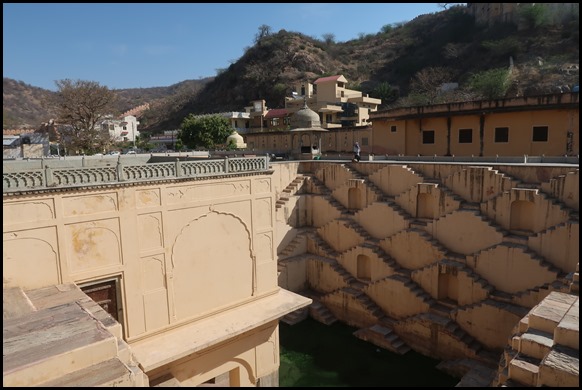 From an Indian tourist website:- There is no confirmed history or record on how this Baori came to be called Panna Meena or Panna Mian Kund. As per the local legend, during the reign of Maharajah Jai Singh, a eunuch named Panna Miahserved in the royal court of Amer Fort and some believe that he was instrumental in constructing this stepwell. It is believed that it dates back to the 16th century. There is yet another theory that it was built by the locals Meenas who were original residents of Amer before Rajputs arrived during 10-11th century. Locals believe that Panna Meena was a brave warrior and this stepwell was built in his remembrance. It is unlikely that Panna Meena Kund dates before the 11th century. In the absence of records, people add their own versions and stories. The fact is we know very little about its history. One of the unique aspects of this Baori is its inconspicuous presence. The steps cover only three sides and there is plenty of space where one can sit, chat or enjoy the views around. There are niches in between the stair levels which add to the design. It’s possible that they were designed with some utility, in mind. There four octagonal pavilions or Chhatris on all four corners. This Baori was more than merely a source of water. It was a meeting spot for the women; to chit-chat and catch up on each other’s life. Therefore, it’s an important part of our culture & history and not simply a built heritage. By visiting, this stepwell you can probably visualize how life must have been centuries ago.
The water in the bottom of the well looked very unappealing.
I set off to take pictures at each corner.
The first picture in this trio shows three arches – the level to which the water rises during the wet season. Up to a few years ago tourists and locals alike could collect water or take a cooling swim. Today local police and guards prevent visitors from even using a single step. The steps and of course, a pose picture.
To our left a flag pole with multiple level open-plan steps. The Amber (Amer) Fort up in the background.
High on the hill, the military outpost.
However you look at it, some very dodgy supports.............
Sadly, a reflection on the window of the car picked up my trouser leg, but, not half as sad as seeing a cow rummaging through a pile of rubbish...... ALL IN ALL COLOURFUL BIMBLING
SPLENDID START TO THE
DAY |
